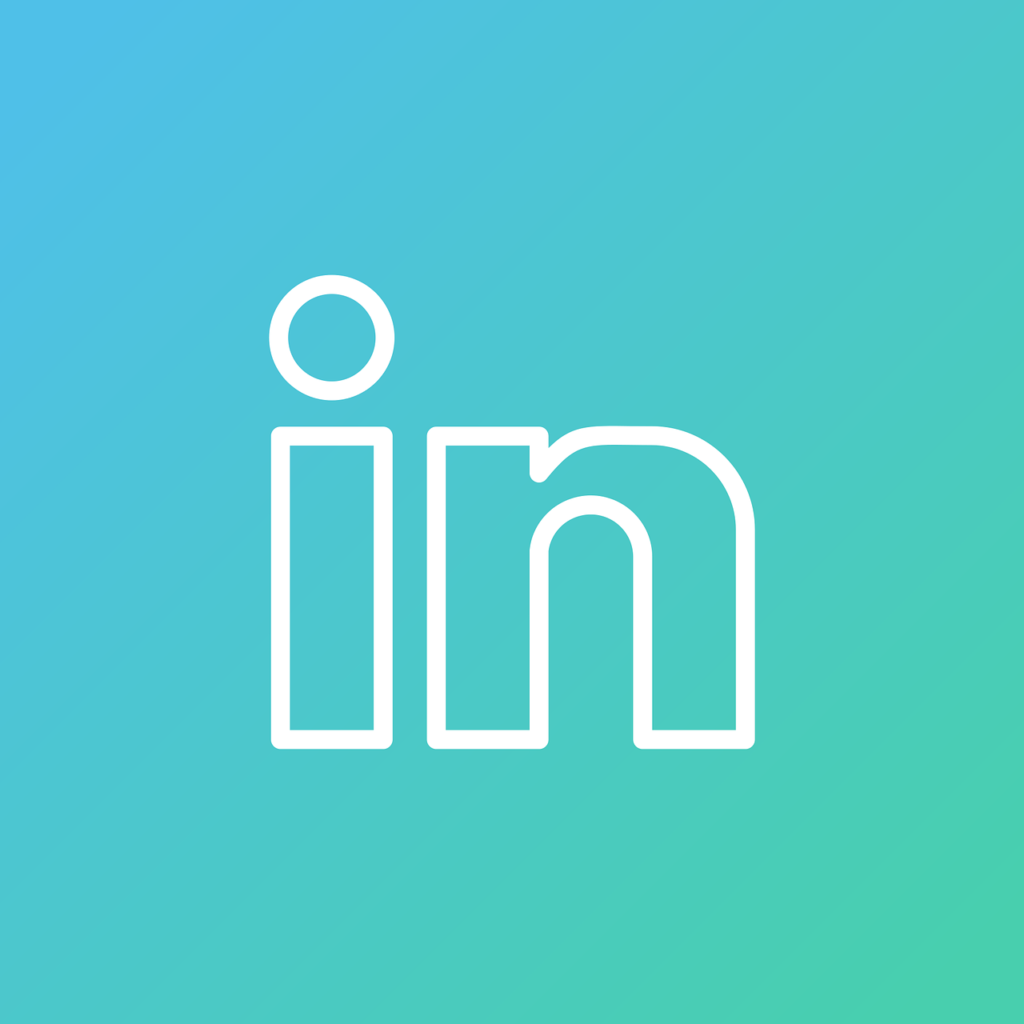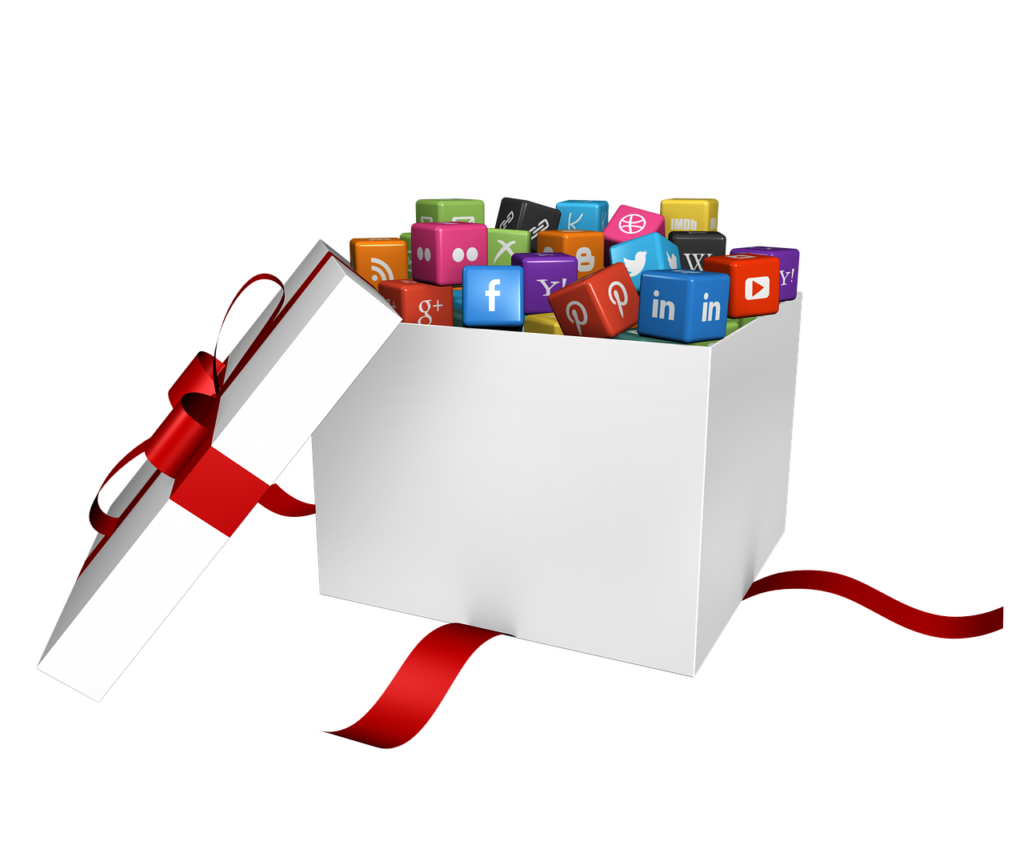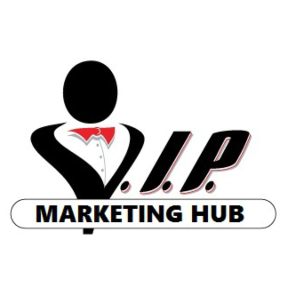LinkedIn is not just a platform for professionals to update their resumes and connect with colleagues; it can also be a powerful tool for small businesses looking to generate leads in the business-to-business (B2B) market. With its vast network of professionals and robust features, LinkedIn offers opportunities for small businesses to connect with potential clients and establish valuable relationships. In this article, we will explore key strategies and tactics that small businesses can employ to leverage the power of LinkedIn for effective B2B lead generation. Whether you're a startup or a well-established small business, LinkedIn can provide you with the tools you need to expand your network and drive growth. LinkedIn is a powerful platform that small businesses can utilize for effective B2B lead generation. With its wide network of professionals and robust features, LinkedIn offers a range of opportunities to connect with potential clients and establish valuable relationships that can drive business growth. This article will guide you through the process of optimizing your small business profile on LinkedIn, building a strong network, creating and sharing high-quality content, engaging through LinkedIn groups, utilizing LinkedIn advertising, leveraging LinkedIn's Sales Navigator, implementing effective B2B lead generation strategies, leveraging LinkedIn Showcase Pages, building trust and credibility through recommendations, and measuring and analyzing LinkedIn lead generation efforts.

Optimizing a Small Business Profile on LinkedIn
Choosing the Right Profile Photo
Your profile photo is the first impression you give to other LinkedIn users, so it's important to choose one that presents you and your business in a professional and approachable light. Opt for a high-quality headshot that clearly shows your face, with a neutral or well-lit background. Dress professionally and maintain a friendly and genuine smile to create a positive impression.
Crafting an Attention-Grabbing Headline
Your headline is a brief statement that appears underneath your name on your LinkedIn profile. It is one of the first things that users see, so it should effectively highlight the key aspects of your business and catch their attention. Use concise and compelling language to communicate what you do and what value you bring to potential clients.
Writing a Compelling Summary
The summary section on your LinkedIn profile is an opportunity to showcase your skills, experience, and expertise. Use it to explain what sets you apart in your industry and how you can help potential clients. Be sure to use a friendly and conversational tone while also being clear and concise.
Showcasing Relevant Experience and Skills
When filling out your LinkedIn profile, thoroughly list your relevant experience and skills. Highlight your achievements and responsibilities in previous roles and elaborate on how they contribute to your current business. Additionally, add any relevant certifications or courses you have completed. This will help establish trust and credibility with potential clients.
Including Contact Information
Make it easy for potential clients or leads to get in touch with you by including your contact information on your LinkedIn profile. Include your email address, phone number, website link, and any other relevant contact details. This will streamline the process for interested individuals to reach out to you.
Adding Media to Enhance Profile
LinkedIn allows you to add media, such as images, documents, presentations, or videos, to your profile. Take advantage of this feature to showcase your work, portfolio, or samples of your products or services. Visuals can help engage users and provide a better understanding of what you offer.
Utilizing SEO Techniques
Optimize your LinkedIn profile by incorporating relevant keywords into your headline, summary, and experience sections. This will improve the visibility of your profile in LinkedIn searches and increase the chances of potential clients finding you. Use industry-specific terminology and keywords that are commonly searched by your target audience.
Building a Strong LinkedIn Network
Connecting with Existing Contacts
Start by connecting with the people you already know, including friends, former colleagues, clients, and partners. LinkedIn makes it easy to import your contacts from email providers or connect with individuals directly through their LinkedIn profiles. Building connections with people you have a pre-existing relationship with can provide a strong foundation for expanding your network.
Joining Relevant LinkedIn Groups
LinkedIn Groups provide opportunities to network with professionals in your industry or target market. Find and join groups that are relevant to your business and actively participate in discussions. By sharing insights, asking questions, and providing valuable input, you can establish yourself as a knowledgeable and trustworthy expert in your field.
Engaging with Industry Influencers
Identify influential individuals in your industry and engage with their content by liking, commenting, and sharing. This demonstrates your interest in the industry and helps you build relationships with influential figures who may be able to connect you with potential clients or provide valuable insights.
Leveraging Alumni Networks
Make use of your alumni network by connecting with fellow alumni on LinkedIn. Alumni groups can provide a valuable network of professionals who share a common background and can potentially lead to business opportunities. Engage with alumni by participating in group discussions or reaching out for informational interviews.
Connecting with Targeted Prospects
Use LinkedIn's search feature to find potential leads or clients within your target market. Refine your search using relevant filters, such as industry, location, job title, or company size. Once you identify individuals who fit your ideal client profile, send personalized connection requests explaining why you would like to connect.
Sending Personalized Connection Requests
When reaching out to potential connections, customize your connection requests to make them more personal and engaging. Mention any common interests, connections, or experiences to establish a connection and show that you have taken the time to research and understand their background. Personalized connection requests are more likely to be accepted and can lead to valuable conversations.
Utilizing Advanced Search Filters
LinkedIn's advanced search filters allow you to further refine your search for potential leads or clients. Utilize filters such as relationship, company, group membership, or language to narrow down your results and find the most relevant connections. This will help you focus your efforts on building relationships with individuals who are more likely to be interested in your products or services.

Creating and Sharing High-Quality Content
Identifying Relevant Topics for Content Creation
To create effective content on LinkedIn, it's essential to identify relevant topics that resonate with your target audience. Consider the challenges, interests, and pain points of your potential clients and address them with your content. Research industry trends and stay updated on current events to provide valuable insights and information.
Writing Informative and Useful Articles
LinkedIn offers a publishing platform that allows you to share long-form articles with your network. Leverage this feature to provide in-depth information, industry analysis, or thought leadership pieces. Ensure that your articles are well-written, informative, and offer actionable takeaways for your readers.
Adding Visuals to Captivate Audience
When sharing content on LinkedIn, use visuals such as images, videos, or infographics to captivate your audience and make your content more engaging. Visuals can help break up the text and provide a more visually appealing experience for the reader.
Sharing Valuable Industry Insights
Demonstrate your expertise and industry knowledge by sharing valuable insights and trends with your LinkedIn network. This can be achieved through posts or articles that highlight your unique perspective on relevant topics. Sharing valuable insights positions you as an authoritative figure in your field and can attract potential clients who value your expertise.
Publishing Case Studies or Success Stories
Case studies and success stories provide tangible evidence of your expertise and how your products or services have benefited your clients. Highlight successful projects or collaborations to showcase the value you bring to the table. Include metrics and measurable results to demonstrate the impact of your work.
Utilizing LinkedIn Publishing Platform
LinkedIn's publishing platform allows you to share long-form content directly on the platform, reaching a wider audience and potentially attracting potential clients. Create a content calendar and consistently publish valuable content that addresses the needs of your target audience.
Implementing Content Promotion Strategies
To expand the reach of your content, leverage LinkedIn's features such as hashtags and @mentions. Include relevant hashtags in your posts and articles to make them more discoverable by users interested in those topics. Additionally, tag individuals or companies you mention within your content to increase visibility and encourage engagement.
Engaging Through LinkedIn Groups
Finding Relevant Groups in the Industry
LinkedIn Groups offer communities of professionals with shared interests, industries, or goals. Find and join groups that align with your business and target audience. Look for active groups with engaged members to maximize your chances of networking and connecting with potential clients.
Participating in Group Discussions
Once you have joined relevant groups, actively participate in discussions to establish yourself as a valuable contributor. Share insights, ask questions, and contribute to conversations with meaningful input. Engaging in discussions demonstrates your expertise and helps you build connections with like-minded professionals.
Sharing Valuable Content within Groups
One way to provide value and gain visibility within LinkedIn Groups is by sharing relevant and valuable content. This can include articles, blog posts, industry news, or resources that may be of interest to group members. Sharing content demonstrates your knowledge and positions you as a helpful resource.
Establishing Thought Leadership
Engaging in group discussions and consistently providing valuable insights can establish you as a thought leader within your industry. Thought leadership increases your credibility and attracts potential clients who value your expertise and opinions. Aim to consistently contribute valuable content and engage in meaningful discussions to position yourself as a trusted authority.
Networking with Group Members
Take advantage of the networking opportunities within LinkedIn Groups by actively connecting with group members who align with your target audience. Engage with their content, comment on their posts, and initiate conversations to foster meaningful connections. Additionally, explore collaboration opportunities or partnerships within the group that can lead to business growth.
Creating or Joining Industry-Specific Subgroups
If you cannot find a LinkedIn Group that caters specifically to your industry or niche, consider creating your own group. This allows you to establish yourself as a leader in that space and attract like-minded professionals who may be potential clients or partners. Alternatively, join existing subgroups within larger industry groups to connect with a more targeted audience.

Utilizing LinkedIn Advertising
Setting Clear Advertising Objectives
Before launching any LinkedIn advertising campaign, it is crucial to define clear objectives. Determine what you aim to achieve, whether it's generating leads, increasing brand awareness, driving website traffic, or promoting specific products or services. Clear objectives will guide your strategy and help you measure the success of your campaigns.
Defining Target Audience and Demographics
To create effective LinkedIn ads, it's essential to define your target audience and their demographics. Consider factors such as job title, industry, company size, location, and seniority level to narrow down your target audience. With LinkedIn's robust targeting options, you can ensure that your ads are seen by the most relevant individuals.
Creating Engaging Sponsored Content
When creating sponsored content, focus on crafting engaging and compelling messages that resonate with your target audience. Highlight the unique selling propositions of your products or services and clearly communicate the value they offer. Use attention-grabbing headlines, clear visuals, and concise copywriting to capture the attention and interest of viewers.
Leveraging LinkedIn Sponsored InMail
LinkedIn Sponsored InMail allows you to send personalized messages to your target audience directly in their LinkedIn inbox. Take advantage of this feature to deliver tailored and relevant content or offers to potential leads. Make sure your messages are concise, compelling, and provide clear actions for the recipient to take.
Utilizing LinkedIn Display Ads
LinkedIn Display Ads appear on the side or bottom of LinkedIn user's pages, allowing you to reach a wider audience. Create visually appealing banners or display ads that communicate your value proposition and attract the attention of users. Tailor your ads to align with the interests and needs of your target audience.
Measuring and Analyzing Campaign Performance
To evaluate the effectiveness of your LinkedIn advertising campaigns, it's important to measure and analyze key performance metrics. LinkedIn's Campaign Manager provides data on impressions, clicks, click-through rates, and conversions. Regularly monitor these metrics to identify areas of improvement and optimize your campaigns for maximum results.
Optimizing Ad Campaigns for Maximum Results
Based on the insights gained from analyzing campaign performance, make data-driven adjustments to optimize your LinkedIn ad campaigns. Consider tweaking targeting options, adjusting bidding strategies, refining your messaging, or testing new ad formats. Continuously optimize your campaigns to increase click-through rates and conversions.
Leveraging LinkedIn's Sales Navigator
Understanding the Features of Sales Navigator
LinkedIn's Sales Navigator is a powerful tool that allows small businesses to streamline their lead generation efforts. Familiarize yourself with its features, including advanced search options, lead recommendations, and InMail messaging. Understanding how Sales Navigator works will help you make the most of its capabilities.
Creating Ideal Customer Profiles
Before utilizing Sales Navigator, define your ideal customer profiles to target the right prospects. Consider factors such as industry, company size, job title, geographic location, and buyer persona characteristics. Creating detailed profiles will guide your search and help you identify prospects who are most likely to convert into valuable leads.
Utilizing Advanced Search and Lead Builder
Sales Navigator offers advanced search filters that allow you to conduct precise searches for potential clients or leads. Utilize these filters to narrow down your search and focus on individuals who fit your ideal customer profiles. The Lead Builder feature further enhances your search capabilities by providing comprehensive information on potential leads.
Saved Leads and Account Recommendations
Sales Navigator enables you to save leads and track their activities, ensuring that you stay updated on their engagement with your business. Additionally, the account recommendation feature suggests other potential leads or companies based on your saved leads and their similarities. Utilize these features to stay organized and expand your potential client pool.
Engaging with Leads through InMail
InMail is a valuable feature within Sales Navigator that allows you to send personalized messages directly to your leads' LinkedIn inboxes, even if you are not connected. Craft compelling and personalized messages that resonate with your leads and provide clear calls to action. Engaging with leads through InMail helps to nurture relationships and move them further into the sales funnel.
Tracking and Managing Lead Interactions
Sales Navigator provides engagement tracking features that allow you to monitor the interactions and activities of your leads. Stay updated on their engagement with your content, such as profile views, comments, or messages. Use this information to prioritize leads and tailor your outreach efforts for maximum impact.
Analyzing Sales Navigator Performance Metrics
Regularly analyze key metrics within Sales Navigator to evaluate the effectiveness of your lead generation efforts. Track metrics such as InMail response rates, connection acceptance rates, and lead conversion rates. This analysis will provide valuable insights into the performance of your outreach and guide your strategies for improving results.
Implementing Effective B2B Lead Generation Strategies
Setting Clear Goals and Objectives
Before implementing any lead generation strategy, establish clear goals and objectives that align with your overall business objectives. Consider metrics such as the number of qualified leads generated, conversion rates, or revenue generated from leads. Clear goals will help you measure the success of your lead generation efforts.
Researching Target Audience and Competitors
Thoroughly research your target audience and competitors to gain insights into their preferences, pain points, and behaviors. Understand their needs, challenges, and aspirations to develop targeted lead generation strategies that resonate with them. By staying informed about your competitors, you can identify gaps and opportunities to differentiate your business.
Crafting a Compelling Value Proposition
Articulate a strong and compelling value proposition that outlines the unique benefits or solutions you offer to potential clients. Clearly communicate how your products or services address their pain points and deliver value. A compelling value proposition will entice potential clients to engage with your business and convert into qualified leads.
Segmenting and Qualifying Leads
Segmentation is the process of categorizing leads based on characteristics such as industry, job title, geographic location, or company size. By segmenting leads, you can tailor your messaging and outreach efforts to address their specific needs and preferences. Additionally, qualify leads based on their level of interest and engagement to focus your resources on high-value prospects.
Nurturing Leads through Relevant Content
Maintain engagement with your leads by providing them with valuable and relevant content throughout their buyer's journey. Develop a content marketing strategy that offers educational resources, informative articles, or case studies that address their pain points and build trust. Nurture leads with targeted content to keep them engaged and move them down the sales funnel.
Leveraging Personalized Messaging
When reaching out to leads, personalize your messaging to build rapport and establish a connection. Refer to specific pain points, challenges, or goals that you have identified in your research to demonstrate your understanding of their needs. Personalized messaging shows that you have taken the time to tailor your communication to their specific situation.
Measuring and Tracking Lead Generation Success
Regularly measure and track the success of your lead generation efforts to ensure you are on track to achieve your goals. Monitor metrics such as the number of leads generated, conversion rates, or revenue generated from leads. Analyze these metrics to identify areas for improvement and adjust your lead generation strategies accordingly.
Leveraging LinkedIn Showcase Pages
Creating Showcase Pages for Products or Services
LinkedIn Showcase Pages allow you to create dedicated pages for specific products or services offered by your business. These pages provide a platform to highlight the key features, benefits, and success stories related to each offering. Create showcase pages to effectively showcase your products or services to your target audience.
Tailoring Content for Specific Target Audience
When managing Showcase Pages, it is crucial to tailor your content to resonate with your specific target audience for each product or service. Develop content that addresses their pain points, highlights the unique benefits of your offering, and showcases how it solves their problems. Tailored content helps establish relevance and engagement with your target audience.
Driving Engagement with Showcase Page Updates
Ensure regular and consistent updates to your Showcase Pages to drive engagement from your audience. Share updates, news, success stories, or industry insights related to your products or services. Encourage followers to engage with your content by asking questions, requesting feedback, or promoting special offers or events.
Promoting Showcase Pages through Sponsored Content
To extend the reach and visibility of your Showcase Pages, utilize LinkedIn's sponsored content feature. Use compelling visuals, clear headlines, and concise messaging to promote your Showcase Pages to a wider audience. By leveraging sponsored content, you can increase awareness of your products or services and attract potential clients.
Monitoring Analytics and Performance Metrics
LinkedIn provides analytics and performance metrics for Showcase Pages that allow you to track the success of your efforts. Monitor metrics such as followers, engagement rates, clicks, and conversions. Analyze this data to understand which content resonates with your audience and adjust your strategies accordingly.
Optimizing Showcase Pages for Conversion
Optimize your Showcase Pages to encourage conversions by incorporating clear calls to action and lead generation forms. Direct visitors to take the desired actions, such as contacting your sales team, signing up for a demo, or downloading a resource. By optimizing for conversion, you can maximize the effectiveness of your Showcase Pages in generating qualified leads.
Building Trust and Credibility through Recommendations
Requesting Recommendations from Satisfied Clients
To build trust and credibility on LinkedIn, request recommendations from satisfied clients or customers. Reach out to individuals with whom you have had successful collaborations or positive experiences. A recommendation provides social proof and demonstrates to potential clients the value you provide.
Providing Recommendations to Partners or Clients
To reciprocate the gesture, provide recommendations to partners or clients who have provided excellent service or produced exceptional work. Acknowledging their efforts and referring them in a recommendation can strengthen your professional relationships and establish a mutual support network.
Displaying Recommendations on Profile
When you receive recommendations, proudly display them on your LinkedIn profile for others to see. Recommendations act as testimonials that highlight the positive experiences and satisfaction of past clients. They add social proof to your credibility and expertise.
Utilizing Recommendations in Sales Conversations
In sales conversations, leverage the recommendations you have received by referencing them. Share testimonials that highlight how you have positively impacted previous clients' businesses or helped solve their problems. Recommendations serve as powerful evidence of your capabilities and can help build trust and confidence in potential clients.
Leveraging Recommendations as Social Proof
Social proof is a powerful psychological phenomenon that influences decision-making. Recommendations act as social proof, providing evidence to potential clients that others have had positive experiences with your business. Leverage recommendations as a way to establish trust and credibility with potential leads.
Engaging with Recipients of Recommendations
When someone provides you with a recommendation, make sure to engage and show appreciation by responding with a personalized message. Thank them for their kind words and offer to reciprocate the gesture. Engaging with recipients of recommendations fosters stronger relationships and highlights your professionalism and gratitude.
Enhancing Reputation and Authority
By actively seeking and displaying recommendations on your LinkedIn profile, you enhance your reputation and establish yourself as an authority figure. Positive feedback from satisfied clients or partners contributes to your credibility and can attract potential clients who value your expertise and reputation.
Measuring and Analyzing LinkedIn Lead Generation
Defining Key Performance Indicators (KPIs)
When measuring the success of your LinkedIn lead generation efforts, it's important to define key performance indicators (KPIs) that align with your goals. KPIs may include metrics such as the number of leads generated, lead conversion rates, cost per lead, or revenue generated from LinkedIn leads. Clearly defined KPIs will help you assess the effectiveness of your lead generation strategies.
Utilizing LinkedIn Page Analytics
LinkedIn provides analytics for company pages, allowing you to measure and track the performance of your lead generation efforts. LinkedIn Page Analytics provides insights into metrics such as follower growth, engagement rates, click-through rates, and demographics. Regularly monitor these metrics to gain a deeper understanding of your LinkedIn audience and optimize your lead generation efforts.
Analyzing Engagement and Follower Growth
Engagement metrics on LinkedIn, such as likes, comments, shares, and click-through rates, can provide valuable insights into the effectiveness of your lead generation strategies. Analyze engagement levels to understand which types of content or messaging resonate best with your audience. Additionally, track follower growth to assess the effectiveness of your content in attracting and retaining potential leads.
Measuring Lead Conversion Rates
Lead conversion rates measure the effectiveness of your LinkedIn lead generation efforts in converting potential leads into customers. Track the number of leads generated from LinkedIn and compare it to the number of leads that convert into customers. This metric helps you evaluate the quality of your leads and the performance of your lead nurturing and conversion tactics.
Tracking Key Metrics with LinkedIn Campaign Manager
LinkedIn Campaign Manager is a powerful tool that allows you to measure and track the performance of your LinkedIn advertising campaigns. Use this tool to monitor metrics such as impressions, click-through rates, click-to-conversion rates, and cost per lead. Regularly analyze these metrics to optimize your advertising strategies and maximize lead generation results.
Comparing Performance Across Different Campaigns
If you are running multiple LinkedIn advertising campaigns simultaneously, compare the performance across different campaigns to identify the most effective strategies. Analyze metrics such as click-through rates, conversions, and cost per lead to understand which campaigns are yielding the best results. Allocate resources and adjust strategies accordingly to optimize your lead generation efforts.
Making Data-Driven Adjustments
Regularly analyze the data you collect from LinkedIn analytics and campaign performance metrics to make data-driven adjustments to your lead generation strategies. Identify areas of improvement, such as underperforming campaigns or low conversion rates. Use this information to refine your messaging, targeting, or content strategies for better lead generation results.
In conclusion, LinkedIn offers numerous opportunities for small businesses to effectively generate B2B leads. By optimizing your small business profile, building a strong network, creating and sharing high-quality content, engaging through LinkedIn groups, utilizing LinkedIn advertising, leveraging LinkedIn's Sales Navigator, implementing effective B2B lead generation strategies, leveraging LinkedIn Showcase Pages, building trust and credibility through recommendations, and measuring and analyzing LinkedIn lead generation efforts, you can successfully attract and convert potential leads into valuable clients. Make the most of LinkedIn's features and tools to expand your professional network, increase brand visibility, and drive business growth.
I'm Ed Porada, the founder of VIP Marketing Hub and publisher of the VIP Marketing Hub e-Magazine. Join me in mastering digital marketing through workshops and training. We provide expert insights, top-notch education, strategies, and expertise to boost your brand's online visibility, generate leads, and build effective digital marketing for your business. Let's equip your brand with the essential digital tools and strategies to thrive online and off.

